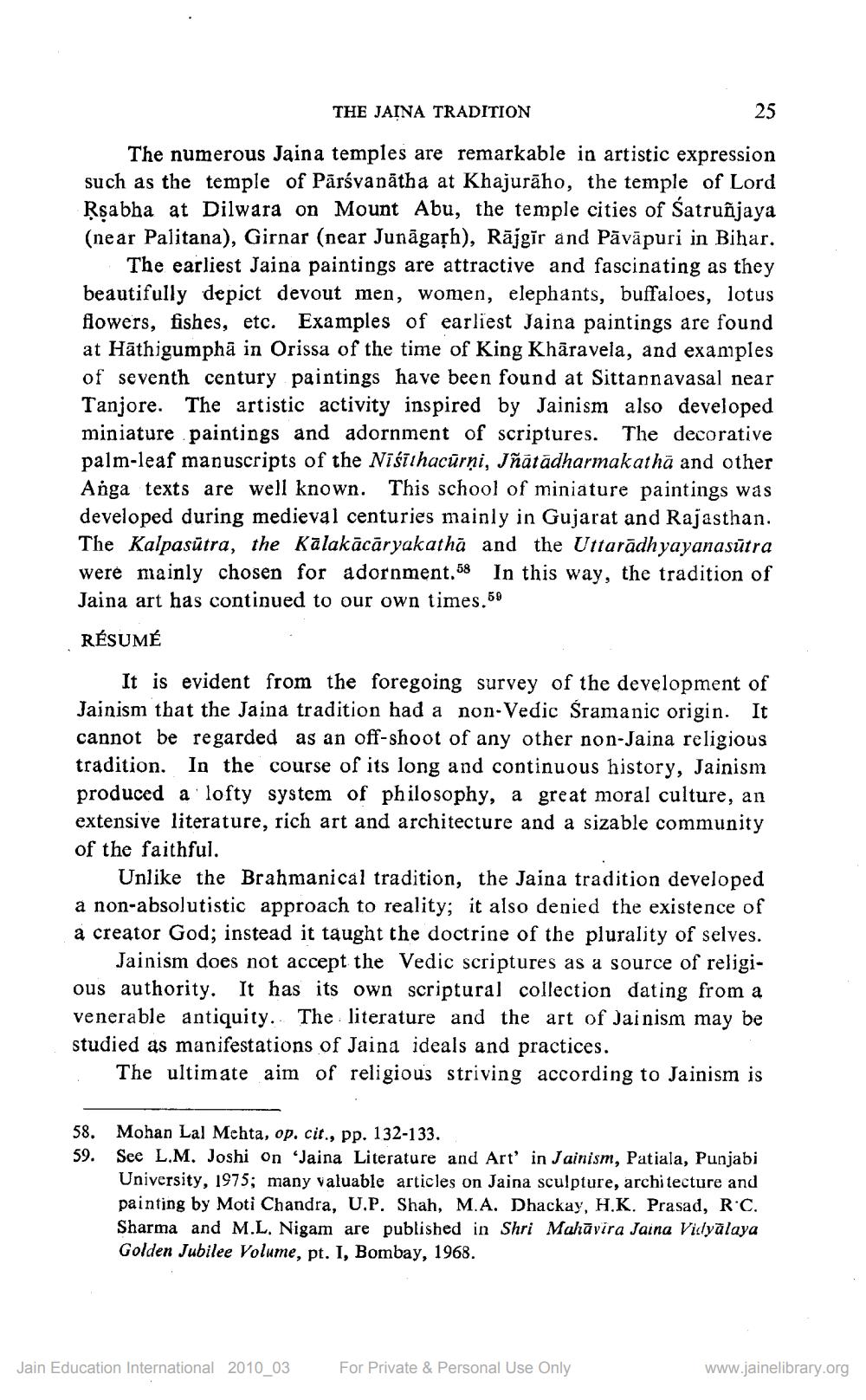________________
THE JAINA TRADITION
The numerous Jaina temples are remarkable in artistic expression such as the temple of Parsvanatha at Khajuraho, the temple of Lord Rṣabha at Dilwara on Mount Abu, the temple cities of Śatrunjaya (near Palitana), Girnar (near Junagarh), Rājgir and Pāvāpuri in Bihar.
The earliest Jaina paintings are attractive and fascinating as they beautifully depict devout men, women, elephants, buffaloes, lotus flowers, fishes, etc. Examples of earliest Jaina paintings are found at Hathigumphā in Orissa of the time of King Khāravela, and examples of seventh century paintings have been found at Sittannavasal near Tanjore. The artistic activity inspired by Jainism also developed miniature paintings and adornment of scriptures. The decorative palm-leaf manuscripts of the Nīśīthacūrṇi, Jñātādharmakathā and other Anga texts are well known. This school of miniature paintings was developed during medieval centuries mainly in Gujarat and Rajasthan. The Kalpasūtra, the Kalakācāryakathā and the Uttaradhyayanasūtra were mainly chosen for adornment.58 In this way, the tradition of Jaina art has continued to our own times.59
RÉSUMÉ
It is evident from the foregoing survey of the development of Jainism that the Jaina tradition had a non-Vedic Śramanic origin. It cannot be regarded as an off-shoot of any other non-Jaina religious tradition. In the course of its long and continuous history, Jainism produced a lofty system of philosophy, a great moral culture, an extensive literature, rich art and architecture and a sizable community of the faithful.
58.
59.
Unlike the Brahmanical tradition, the Jaina tradition developed a non-absolutistic approach to reality; it also denied the existence of a creator God; instead it taught the doctrine of the plurality of selves. Jainism does not accept the Vedic scriptures as a source of religious authority. It has its own scriptural collection dating from a venerable antiquity. The literature and the art of Jainism may be studied as manifestations of Jaina ideals and practices.
The ultimate aim of religious striving according to Jainism is
25
Jain Education International 2010_03
Mohan Lal Mehta, op. cit., pp. 132-133.
See L.M. Joshi on 'Jaina Literature and Art' in Jainism, Patiala, Punjabi University, 1975; many valuable articles on Jaina sculpture, architecture and painting by Moti Chandra, U.P. Shah, M.A. Dhackay, H.K. Prasad, RC. Sharma and M.L. Nigam are published in Shri Mahavira Jaina Vidyalaya Golden Jubilee Volume, pt. I, Bombay, 1968.
For Private & Personal Use Only
www.jainelibrary.org




